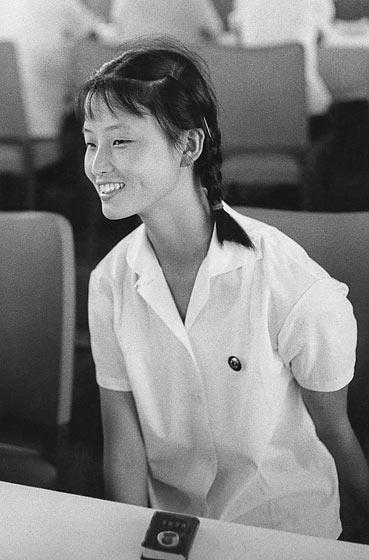This is a picture book. I am a photographer, not a Sinologue. In China I did a lot of walking, a lot of looking, and I took a lot of pictures. I also drank a lot of tea while listening to endless recitations of the latest versions of the Party doctrine. I read all the right books, learned what I could from fellow travelers, shared their enthusiasms, disappointments, and bewilderments. What else could I possibly add? To understand how the Chinese think and feel is so difficult that I leave the subtle art of analysis and commentary to others. The best way to discover China is perhaps to use one’s eyes. Intense attention to detail and to the moment, here even more than elsewhere, can lead to knowledge and understanding.
For so long, and until so recently, China was a closed and secret land where the huge transformations taking place were almost always hidden from foreign eyes. Today the doors are opening. Visitors are flooding in. After a first impression of uniformity, of omnipresent poverty, they discover a mosaic of images where past and present, century-old traditions and the grip of the Party, are surimposed like double and triple exposures, rarely harmonizing, constantly clashing. That is why the photographs in this book are in no particular chronological or geographical order. I wanted them to confront and complete one another, thus reflecting today’s China –like visual clues to better understand the present, to better understand rather than to judge. Everywhere I saw and came to love the beauty of faces, the strange immensity of the landscapes. I sensed a dignity that has so often replaced humiliation.
In 1957, I had hardly stepped out of Peking Station when I took my first photograph: a broken-down rickshaw flanked by a ludicrous parasol: an image of the destitution left over from China pre-revolution days.
In 1965, deep in the countryside, I saw students by the thousands awkwardly wielding picks and shovels. They were forced to work off the temptations of city life and to cleanse themselves of the sin of intellectuals’ pride.
In 1980, the last image of China I took away with me: in the heart of the Forbidden City, the Chinese no longer pose in front of Mao’s portrait but beside a car, symbol of the consumer society’s ideal all over the world. This is a stumming turn. Does the average Chinese, molded by years of forced egalitarianism and religious austerity, have, after all, the same yearnings as his cousin in Hong Kong? This pristine purity, after having fascinated our Western minds, has been discarded by the Chinese themselves. To dream of cars and gadgets is now authorized… but to dream only.
Mao’s revolutionary drive ended in the Great Cultural Revolution. Where will this new surge of modernism and industrialization lead? If we go back and look at China again, we shall see.
Marc Riboud
